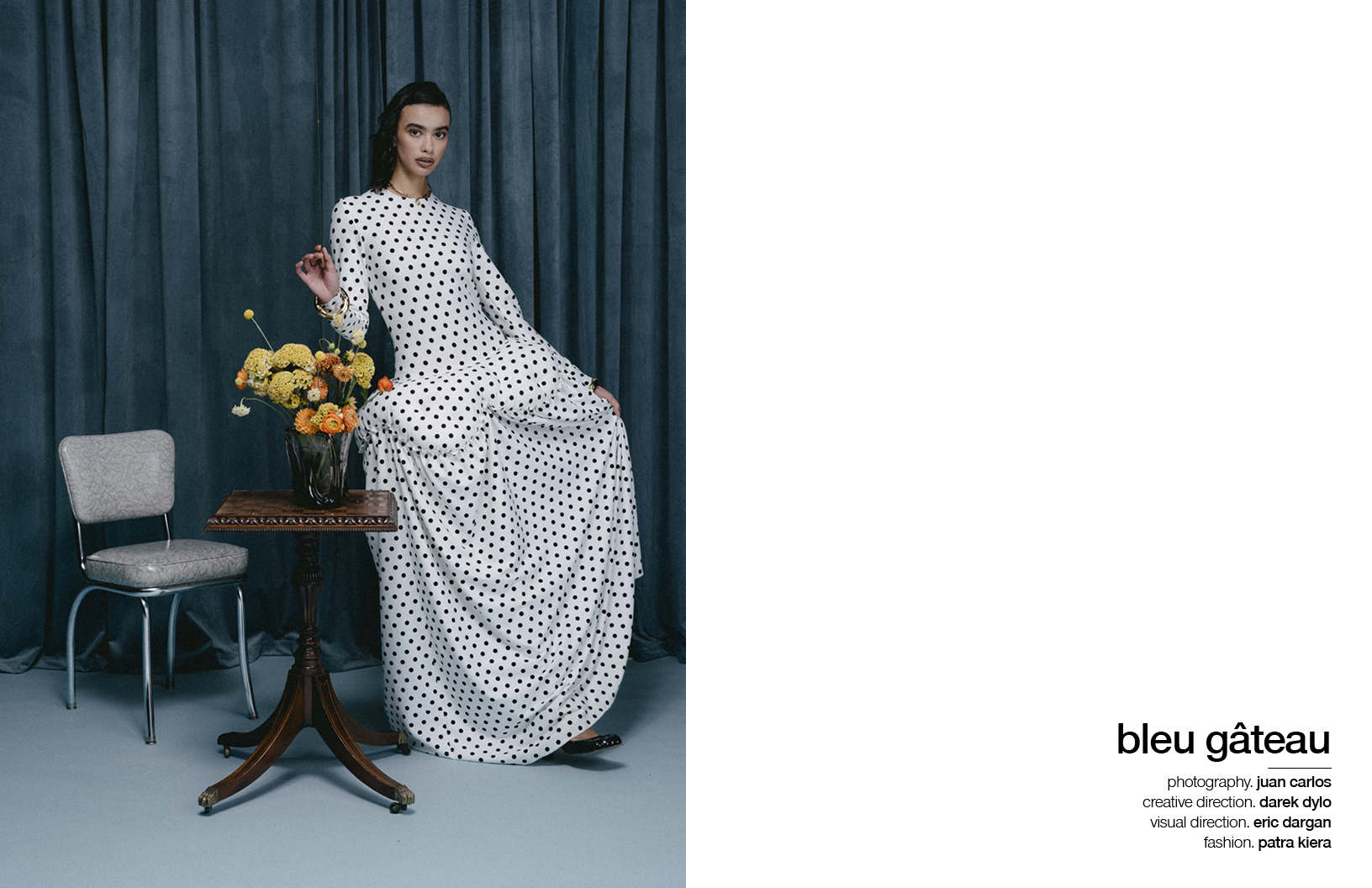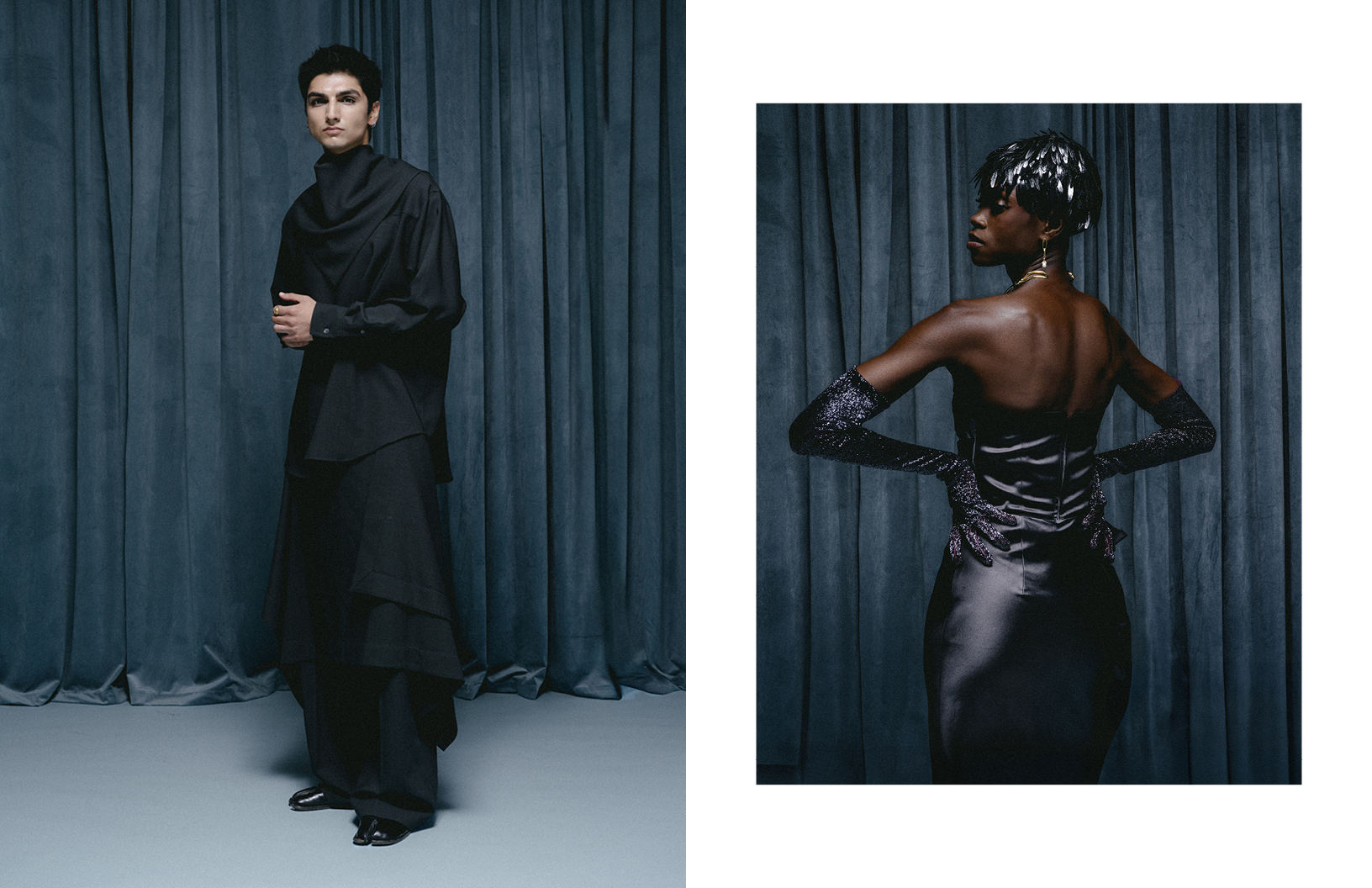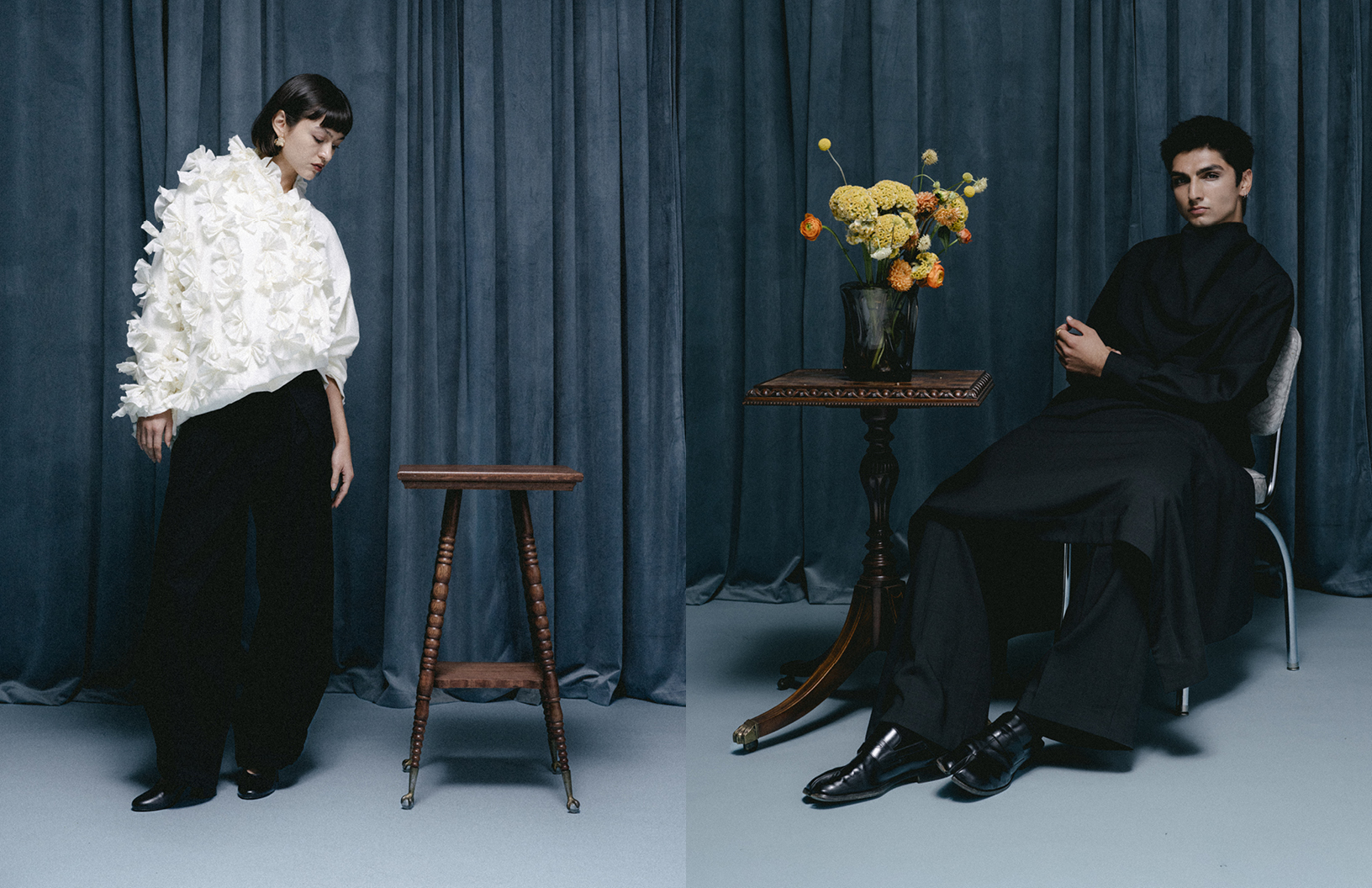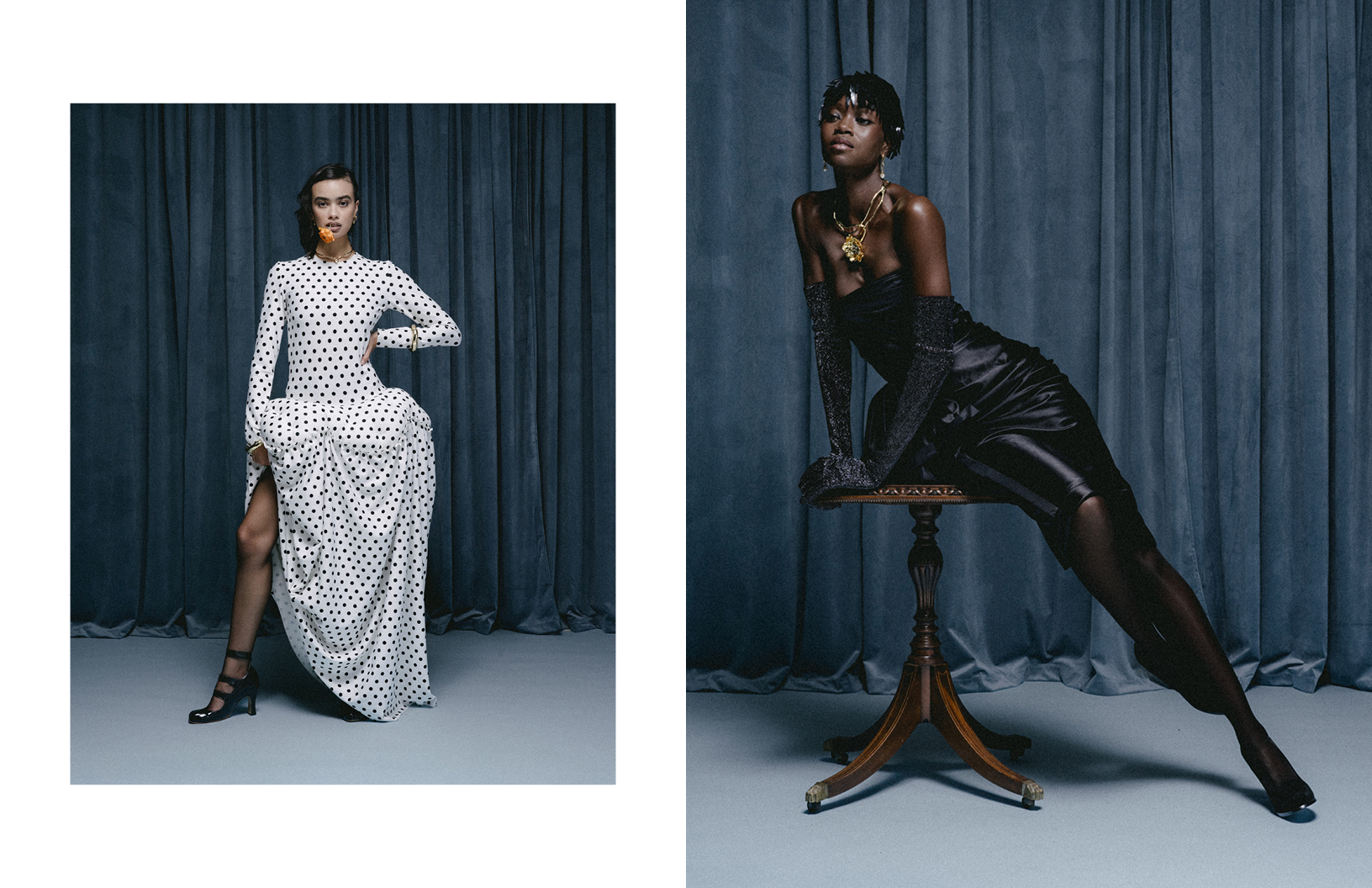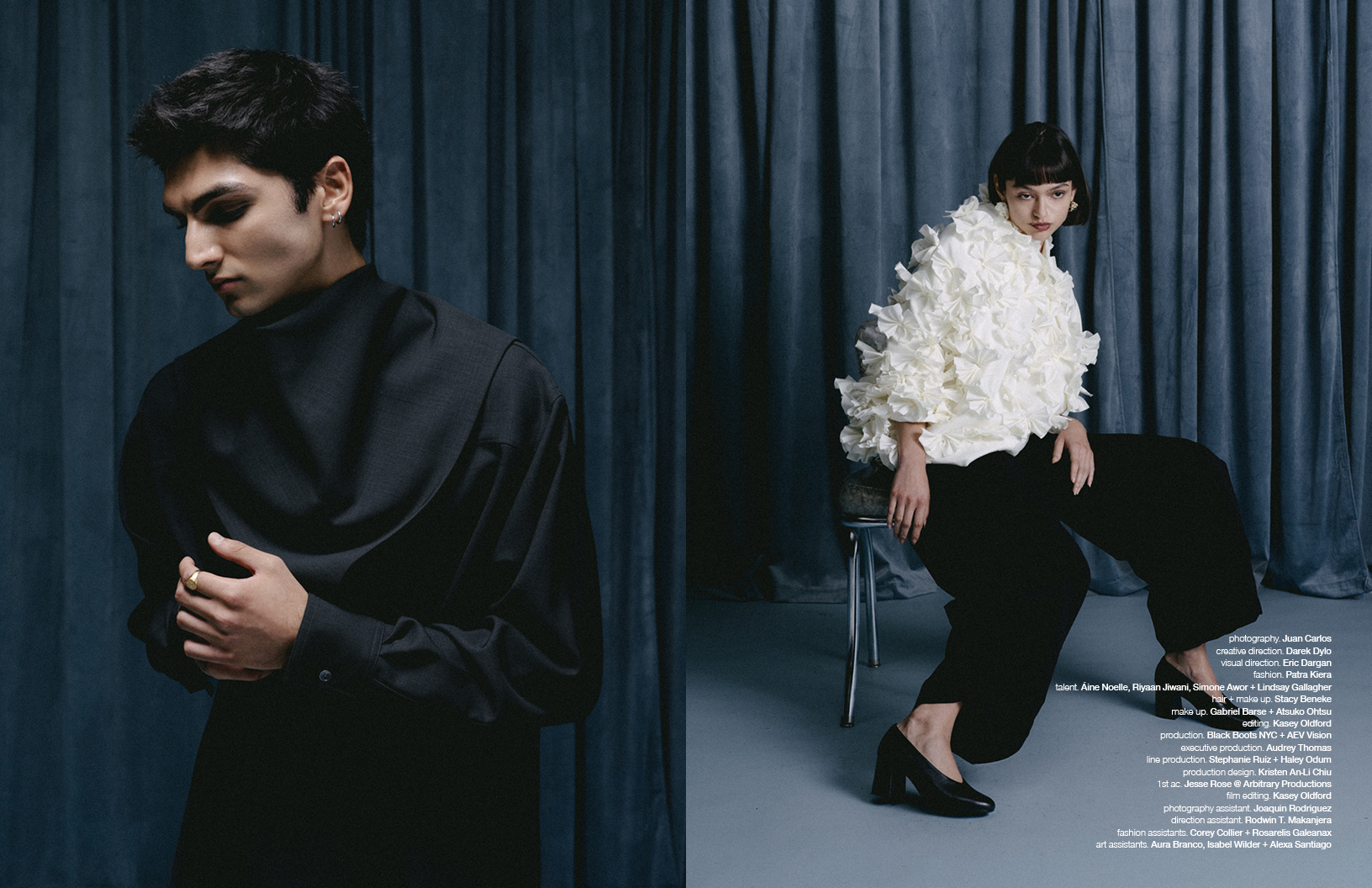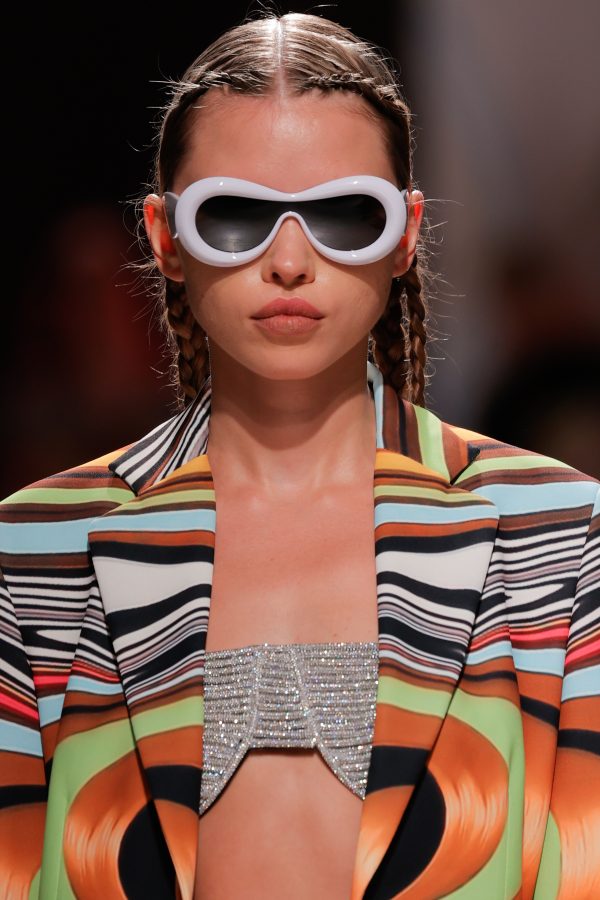
full looks. SILK-100
With SILK-100, the wearer becomes, in part, the designer. The transformability of a garment, as well as trying to meet people’s needs by making each piece multi-use, is what SILK-100’s main mission is all about. Not only is this beneficial for its wearers, but also for the environment as its multipurpose pieces conserve resources.
Recently, the brand launched SANGYE, a collection that reflects cultural diversity, a greater openness and tolerance, and the formation of new forms of communication within society, expressed by the mixing of clothing traditions. Schön! spoke with the mind behind the label to hear more about the collection, the importance of transformability and what’s to come for the brand.
You say you started with t-shirt blanks and moved on to full designs. Tell us a bit more about that transition — how did you hone your focus for SILK-100?
Due to my thesis and my fascination for big cities and their challenges, the importance of the mutability of a garment has become more and more important. Considering the scarcity of resources and global population growth, especially in cities, as well as social and personal needs for clothing, such as sportswear or going-out wear, multipurpose use of a product is a sustainable way to meet people’s needs.

full looks. SILK-100
You mentioned Tibetan culture playing a role in your work. Can you explain that a bit — its influence in both your life and your work?
I grew up in Germany, but I have always experienced Tibetan culture from my father. The language, the food and the traditional fashion played an important role in my life. I have always loved wearing Tibetan robes and combining the different elements with my western clothes.
Gradually, I became more and more familiar with Tibetan cuts and their functions and integrated them into my designs. For example, the traditional robe of Tibetan women and men, which is called Chuba, has an acclimatising effect on the body temperature. By wrapping the robe with a long belt, babies or belongings can be carried. The typical long sleeves can be worn in different ways. The weather in Tibet can be very changeable and if the sleeves or just one of them is thrown back, the body temperature can be adjusted. So the sleeve is a useful and very aesthetic element in Tibetan clothing, which is why they often featured in my designs. Through my German mother, of course, I also got to know European or German traditions. The mixture of these cultures in my life has a big influence on how I feel and see fashion and how I express it with SILK-100.

full looks. SILK-100
You’ve talked about the importance of transformability for your pieces. What does that mean, and why do you feel that’s important in your work?
In these times, I think it’s very important to involve the customer in the creation of the look and give them a sense of uniqueness as well as unity. I always try to include the customer as a co-designer in my designs. I want to give them multiple ways to customise their look, through different closure systems or detachable elements, so they can switch to different product groups or styles within the same piece. For example, multifunctional thongs, which can be worn as a bra or shirts, which can be transformed to a skirt.

full looks. SILK-100
Introduce us to SANGYE. What inspired the pieces in this collection?
With SANGYE I want to reflect the cultural diversity and the formation of new forms of communication within society, which is expressed through the mixing of clothing traditions.
The collection expresses part of my Tibetan roots as well, which is already indicated in the name. SANGYE means awakened and purified from all impurities. With increasing migration around the world, not only cultures are mixing, but verbal and non-verbal languages are changing and emerging. Communication is part of being human and interaction is essential for survival, whether in physical or mental form. We need each other and our lives depend on those around us. So the collection also serves as an appeal for greater openness and tolerance.
You explain that SANGYE means awakened and purified from all impurities. Why did you feel that best described this collection?
Through the visibility of elements that are normally hidden, the collection reflects the closedness within a population as well as the desire for more openness and tolerance. These elements stand for the awakening and the clear view in terms of tolerant and transparent communication, as they are indispensable in a multicultural society.

full looks. SILK-100
Tell us more about the photos with which you’ve accompanied this collection. What were you looking to capture with these images?
Strong cohesion and connection. I wanted to create this not only through the collection and the faces, but also with the team behind them. It was very important to me that we are a familiar team and that we transfer this bond to the photos.
What has been influencing you lately?
Definitely the pandemic! By being restricted in the freedoms and in everyday needs people take for granted, I was able to spend a lot of time in creative work and in looking more deeply at human needs. Especially the personal needs in clothing.
What’s next for SILK-100?
Currently I am working on a new collection, and some nice collaborations will be coming very soon!

full looks. SILK-100
Visit SILK-100’s website and follow SILK-100 on Instagram.
photography. Tessa Bozek
fashion design. SILK-100
fashion. Cedric Quendler
models. Irene Opoku + Nana Nyarko @ Spin Model Management, Jee Hye Lee @ IZAIO Model Management
hair + make up. Emily Ewerwahn
photography assistant. Lissy Gollnik


Schön! Magazine is now available in print at Amazon,
as ebook download + on any mobile device




























































